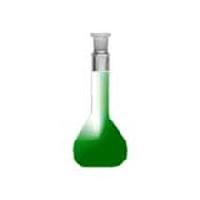
%20ions%20image20.jpg)
Because of the blue color of its aqueous solution, end point detection in titrimetric methods may be difficult. Chloride may be measured by ion chromatography or by using a chloride ion selective electrode. The metal may be analyzed by AA, ICP, or other instrumental techniques. The solution that turns light blue may be used in organic reduction.Įlemental composition: Cr 42.31%, Cl 57.69%. Bubble CO 2 through the solution to agitate it and prevent any possible reoxidation of chromium by air. To the amalgamated zinc add 800 mL water, 80 mL conc.

The tetrahydrate occurs in blue hygroscopic crystalline form, that changes to green modification above 38☌ decomposes to trihydrate at 51☌ soluble in water.Ĭhromium(II) chloride may be prepared by the reaction of chromium with anhydrous hydrogen chloride at 600 to 700☌:Īlso, the compound may be prepared by the reduction of chromium(III) chloride with hydrogen at 500 to 600☌:Īn aqueous solution of chromium(II) chloride for organic reduction may be prepared as follows:Īmalgamate zinc by shaking 400 g zinc dust with a solution containing 32g HgCl 2, 20 mL conc.

White lustrous needles or fibrous mass hygroscopic density 2.88 g/cm 3 melts at 814☌ vaporizes at 1,300☌ highly soluble in water, forming blue solution insoluble in ether. As a reducing agent, it is used to reduce alpha-haloketones to parent ketones, epoxides to olefins, chloroimides to imines, and aromatic aldehydes to corresponding alcohols. CHROMIUM(II) CHLORIDEįormula: CrCl 2 MW 122.90 also forms a tetrahydrate, tetraaquochomium dichloride Cr(H 2O) 4Cl 2 Ĭhromium(II) chloride is used as a reducing agent as a catalyst in organic reactions in chromium plating of metals and as an analytical reagent for the dehalogenation of vic-dihalides. Chronic exposure may produce cancer of the respiratory tract. Inhalation of Cr 6+ dust or mist can cause perforation of the nasal septum, lung irritation, and congestion of the respiratory passsages.
#Chromium chloride heat of solution in water skin#
Cr 6+ is corrosive to skin and causes denaturation and precipitation of tissue proteins. While chromium metal or trivalent chromium is not very toxic, hexavalent chromium (Cr 6+) is carcinogenic and moderately toxic. Be applied to measure the metal at a much lower detection level.


 0 kommentar(er)
0 kommentar(er)
